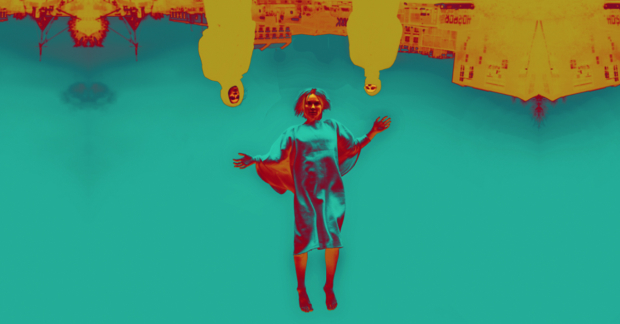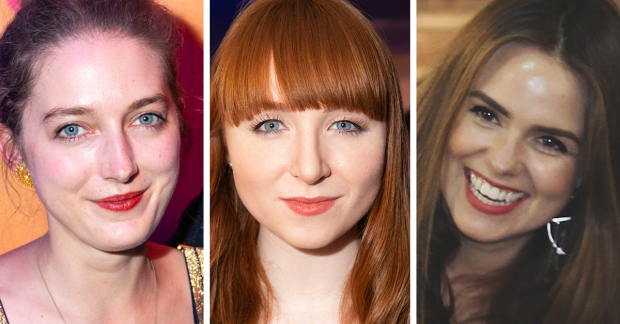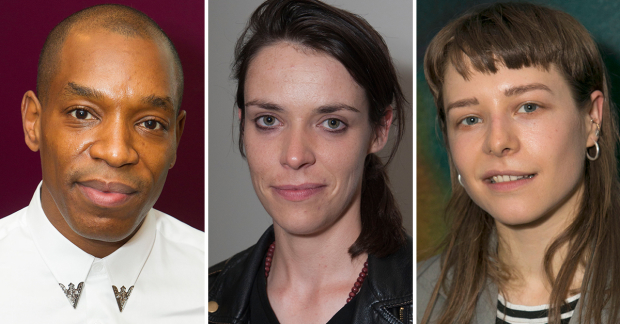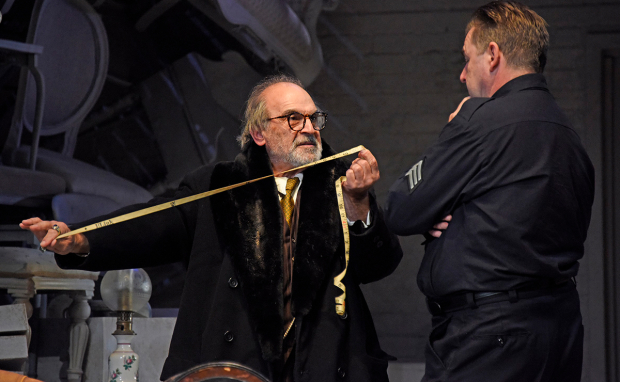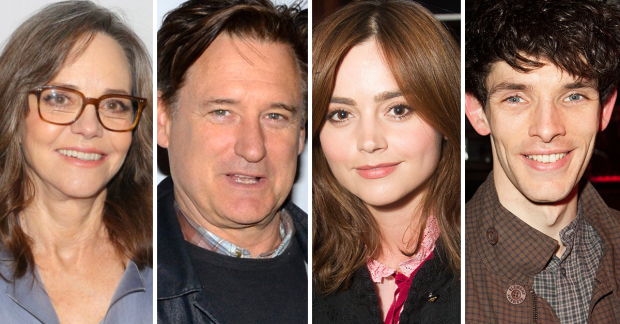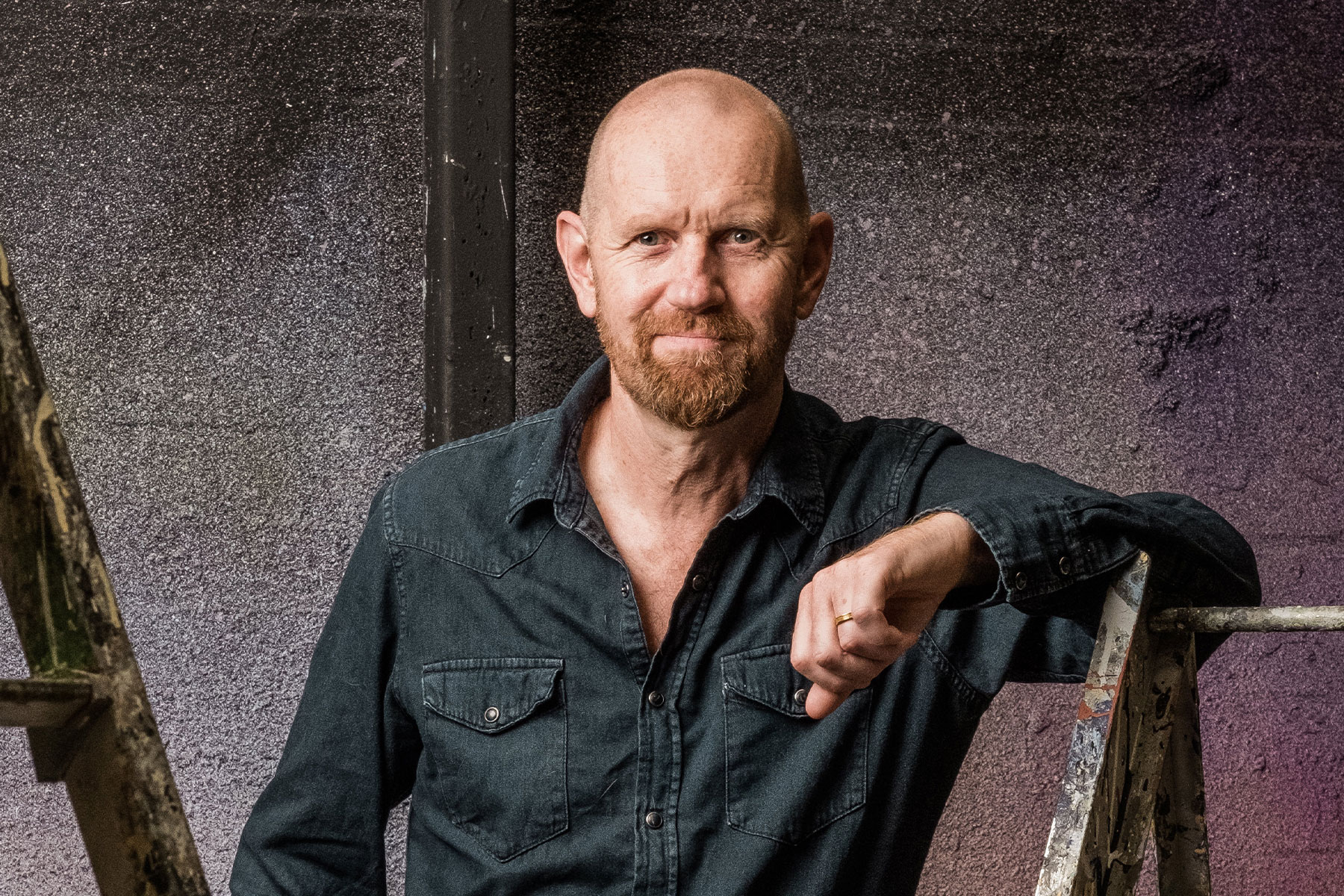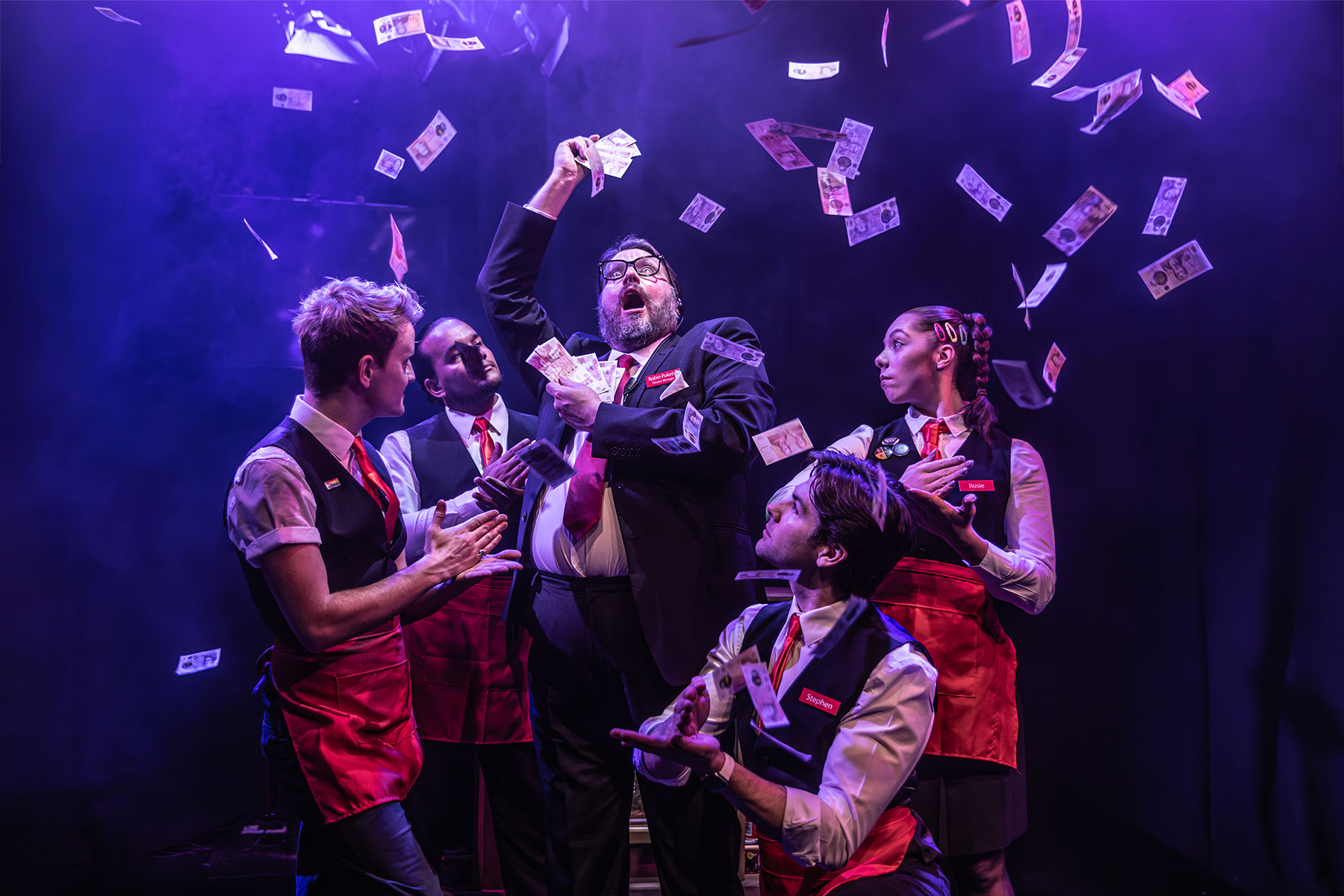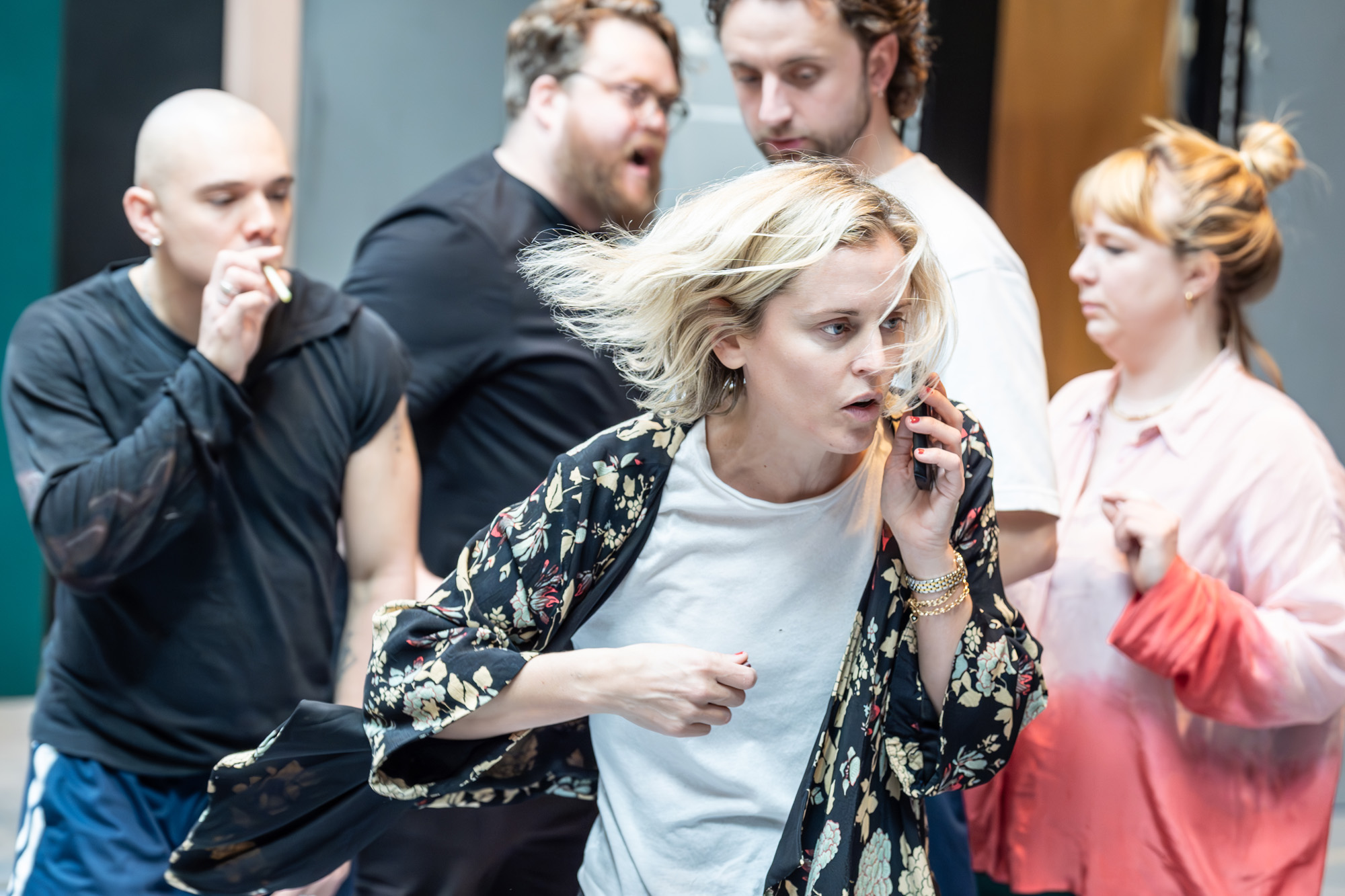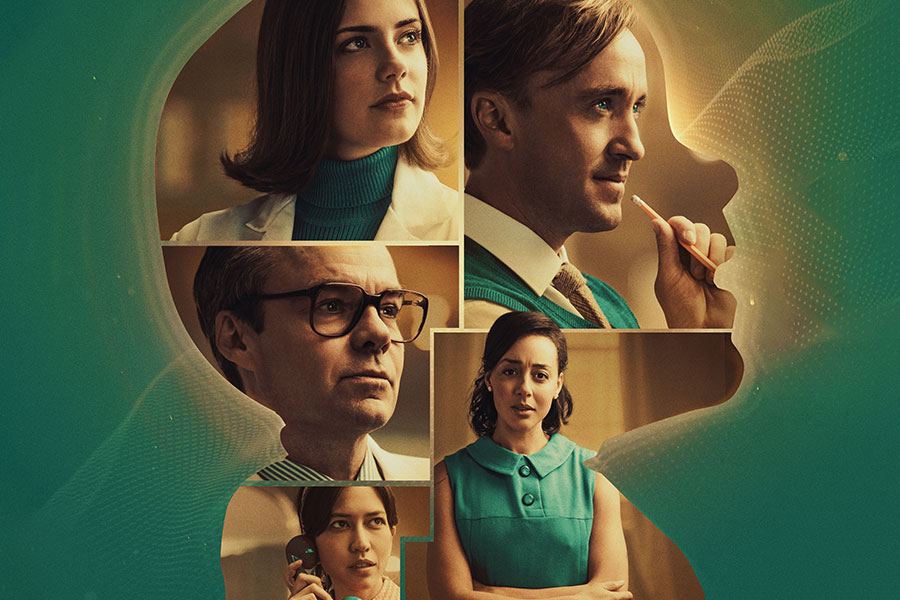Review: The Crucible (Yard Theatre)
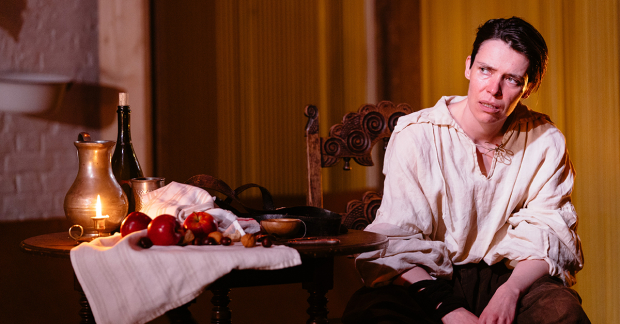
© Helen Murray
Abigail Williams (Nina Cassells) enters onto the stage. She smiles knowingly at the audience. Ding. She bangs upon the small bell in her hands. Fixed upon the back wall of the screen is a television screen that comes to life, with text which says that this is the story of The Crucible. Ding. The text fades. Ding. We read a note by Arthur Miller on the historical accuracy (or lack thereof) of the play. Williams smiles again. She's heralding the production and it sets the tone for the proceedings, with Cassells infusing Abigail with a subtle authority right from the beginning.
Jay Miller's adaptation of Miller's The Crucible at the Yard blends the historical with the present to tell the story of a small town torn apart by suspicion leading up to the Salem witch trials. It is a female-led production, with women playing several of the male characters, which feels fitting for a play that features the oppression of so many women whilst giving very few of them true visibility. Caoilfhionn Dunne plays the leading role of John Proctor, and both she and Emma D'Arcy, who plays Proctor's wife, Elizabeth, shine in this production. Sophie Duval brings excellent comic timing and presence to all her characters, but particularly that of Giles Corey, the well-meaning yet somewhat hot-tempered farmer whose curiosity leads his innocent wife to be suspected of witchcraft. Sorcha Groundsell, who plays Mary Warren, brings a touching timidity to a character who gets so wrapped up in superstition that she can no longer tell fabrication from reality.
It's a long text to grapple with (this particular performance runs at just under three hours), but the actor multi-role with engaging intensity and drive the story forward with few lulls in pacing. Transitions are helped along nicely by haunting soundscapes from Josh Anio Grigg and sudden, jolting flashes of light (designed by Jess Bernberg). At one point, we are submerged in darkness and when the lights flash back on briefly, dark figures stand amongst the audience, creating a more immersive sense of the demonic spirits that the townsfolk are so scared of – a moment that creates a genuine sense of horror amongst the audience.
However, the adaptation itself feels confused. At times it engages us with naturalistic scenes as characters don puritanical costume. At other times characters wear clothes that are more at home in the 21st century and the show distances us with detached modes of narration that feel decidedly Brechtian. Characters go from talking to each other in intimate scenes to conversing through microphones. The deadly spirits at work through the play are represented by characters clad in black, wearing macabre masks, who appear more and more frequently as the show unravels and hysteria takes over the Salem town. The second act begins with a comic karaoke and gaudy lights, which is jarring to the much darker atmosphere created during the first act. Whilst this jarring effect is perhaps a little nod to the Brechtian elements mentioned above, designed to 'wake us up' and make us feel present, it also veers the show just shy of melodrama, and, importantly, dispels the tension built so well during the first act.
This is the Yard's first production by a non-living writer, and it breathes some new life into an old and well-loved text. The space itself, with its corrugated iron roof which patters loudly in the rain, is the perfect intimate environment for such a revival. Hopefully the Yard can continue to make fresh adaptations, with women at their heart.



